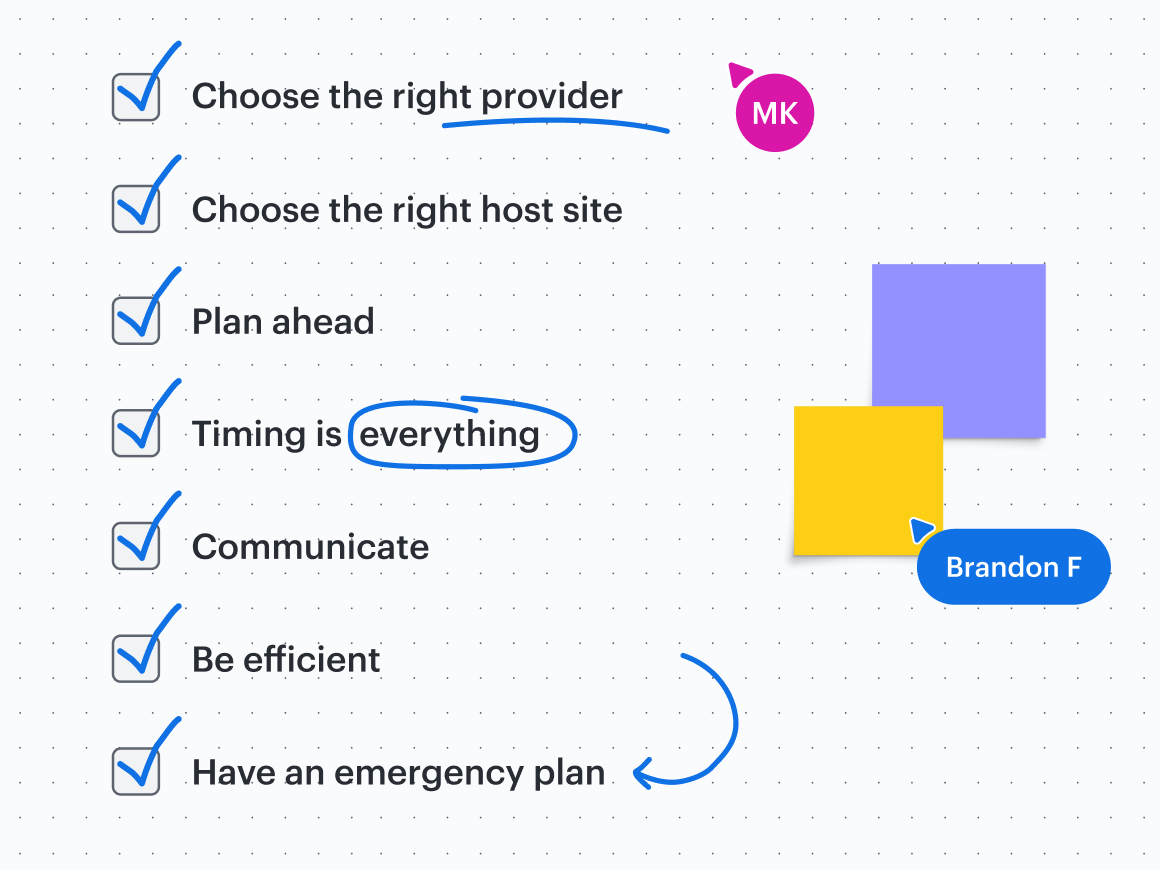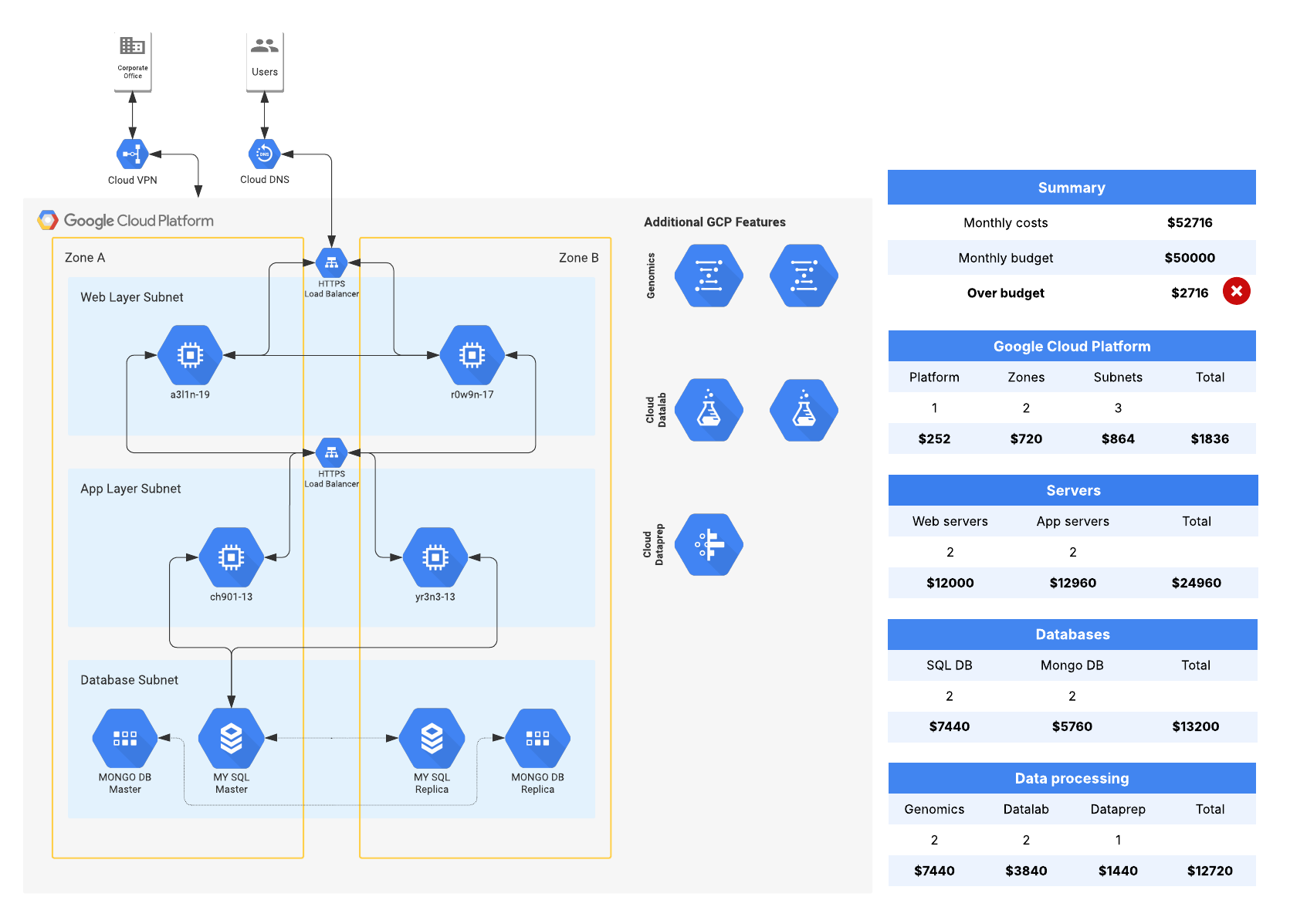
Migrating to the cloud? Learn these data migration risks and mitigation tactics
Reading time: about 5 min
Many businesses choose to migrate to the cloud to remain competitive in today’s fast-paced world. While this strategic move has many benefits, cloud migration can be a big undertaking. Without a cloud migration strategy that involves risk mitigation and a migration plan, organizations could face data loss, security breaches, unauthorized access, and more.
Data migration is one of the biggest hurdles companies face when moving to the cloud. Missteps during this process can directly impact application performance and ultimately, the business.
This article addresses top cloud migration risks and how you can mitigate those risks.
Cloud migration challenges
Cloud service provider problems: The “cloud” is hardware that exists in the real world, and if your cloud service provider has issues, your app may have difficulty uploading, storing, and accessing data.
Standardized security policies: Several high-profile cloud data breaches have occurred because businesses did not adhere to cybersecurity best practices. For example, one business forgot to encrypt its customer data: It was sitting exposed in a cloud-hosted .docx file. Without careful security policies, proprietary, cloud-hosted data is open to risk.
Unsecure access: There’s a good chance people throughout your business reuse passwords from account to account–it’s an extremely common practice. Similarly, sharing the same account with colleagues means using the same login credentials. This is also a common and risky practice. Using two-factor authentication prevents bad actors from figuring out passwords and gaining access to your data.
Latency: Choosing budget-friendly server options can sometimes mean your data is hosted geographically far away from your users, leading to slower server times. This translates to sluggish data speeds, ultimately hurting performance and frustrating users.
Compliance: Your business, not your cloud service provider, is responsible for privacy compliance. Without meeting the compliance standards set forth by your state and national government, your organization, stakeholders, and clients are unprotected, and you could even be subject to hefty fines.
Ways to mitigate cloud migration risks

Despite the challenges mentioned, moving to the cloud is still worth the effort. Here are some best practices to help ensure everything goes smoothly.
Choose the right provider
Before you begin migration, do your research on cloud provider options. Consider developing a standardized set of questions to ask before you commit to a provider. Some example questions include:
-
What is your history of data breaches, and what have you done to ensure none happen in the future?
-
What is your data redundancy plan?
-
Do you allow independent audits of your data centers?
-
How is my data separated from the data of your other clients?
-
Do you use any third-party data centers or providers?
-
What are your security protocols?
-
What is your crisis response in the event of a security breach?
Choose the right host site
It might surprise you to learn that the cost of hosting varies by location. The more stable the location and the higher the energy bills, the greater the cost.
To choose the right location, determine where the majority of your customers are located. Then, choose a data center that’s closest to them and in an environmentally and politically stable area. This will reduce latency.
Plan ahead
When you’ve chosen your host and hosting site, you can begin to prepare for the actual migration.
1. Chart the course: Use Lucid to create a full overview of your migration, including structure, processes, responsibility, and timeline. It’s important to conduct a full audit of your existing infrastructure.

You’ll also need to decide if you’re going to go fully cloud-based or if you’re going to use a hybrid model. If you’re using a hybrid model, be sure to indicate which assets are not going to be migrated to the cloud. Many businesses opt to keep their most sensitive data on-premises.
Once you’ve established the best path forward, you’ll be better able to choose a cloud solution that’s a good fit for your current architecture. This is important to ensure there are no interoperability conflicts between your legacy hardware and the cloud migration.
2. Encrypt data that isn’t moving: Data that is queued up for migration or isn’t being migrated is simply “at rest.” At-rest data is especially vulnerable during cloud migration. It’s crucial to encrypt data at rest while also ensuring it maintains compliance, so if unauthorized users gain access to the system, your data is still protected. Make sure data is kept intact, in sync, and consistent.
3. Establish protocols ahead of time: In addition to ensuring your cloud data is protected after the migration, establish security protocols for the migration itself. Only grant access to essential employees who are experts at cloud migration. And keep these same employees involved inin at the process every step of the way, from planning to implementation.
Timing is everything
Choose a time that will disrupt users the least but gives you enough time to complete the migration. Leverage your analytics to determine the time frame when people are using your data the most, and plan to avoid those times. Typically, migration takes place very early in the morning.
Communicate
Communicate with your entire organization early on to let them know about the migration and what they can expect. Otherwise, a service interruption could negatively affect many areas of the business.
Be efficient
Your migration should be completed quickly to reduce duplication or data loss and maintain usability of needed assets. Work with your cloud provider to develop an estimate for the time needed to complete the migration.
Have an emergency plan
Say that the cloud migration process begins, and everything goes wrong. Who can your migration team call for help? Obviously, anticipating issues proactively is the best policy, but sometimes the unforeseen occurs: You'll need to develop a plan for this worst-case scenario. If something goes wrong, consider it a learning opportunity and conduct a post-mortem to incorporate lessons learned for later on. Using a work acceleration platform like Lucid will help you clearly visualize not only your cloud architecture but also your emergency plan.
With all that could go wrong, it’s easy to feel hesitant about adopting cloud computing. But cloud adoption is a necessity for conducting modern business.

Ready to begin your cloud migration process?
Lucid helps IT teams visualize a clear path forward.
See howAbout Lucid
Lucid Software is the leader in visual collaboration and work acceleration, helping teams see and build the future by turning ideas into reality. Its products include the Lucid Visual Collaboration Suite (Lucidchart and Lucidspark) and airfocus. The Lucid Visual Collaboration Suite, combined with powerful accelerators for business agility, cloud, and process transformation, empowers organizations to streamline work, foster alignment, and drive business transformation at scale. airfocus, an AI-powered product management and roadmapping platform, extends these capabilities by helping teams prioritize work, define product strategy, and align execution with business goals. The most used work acceleration platform by the Fortune 500, Lucid's solutions are trusted by more than 100 million users across enterprises worldwide, including Google, GE, and NBC Universal. Lucid partners with leaders such as Google, Atlassian, and Microsoft, and has received numerous awards for its products, growth, and workplace culture.
Related articles
Safeguarding your trust: Lucid’s dedication to data security
Lucid’s proactive approach to security is more than a promise. It’s ingrained in all we do. Learn more here.
How to execute a successful cloud migration strategy [+ checklist]
Clarify the complexity of cloud migration with this checklist—complete with tips for increasing visibility and alignment in the process.
Level up your cloud migration strategy with Lucid
In this blog post, we will explore how to level up your cloud migration strategy with Lucid.
The value of a single source of truth during cloud migration
In this blog post, we will explain why a single source of truth in cloud migration is important, and how to obtain it.
